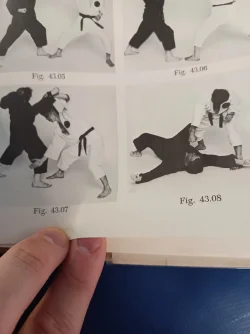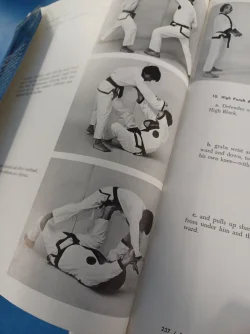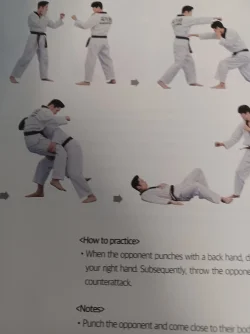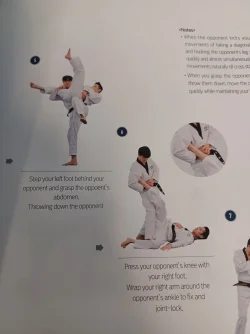J. Pickard
Brown Belt
Probably not in demos or sport because that doesnt attract people for demos, and its outside of the ruleset in the sport. As far as modern TKD texts that displays such techniques, they are everywhere including the new KKW text. I cant apeak to ITF/chang hon systems, but most old Kwan texts on the subject, as well as kukkiwon approved texts all have some display of grappling and takedowns. I have books ranging from 2022 all the way back to the 1960s that display it to some extent.Well I haven't seen that sort of stuff in modern TKD.
The first image is 1968 from GM Dson Duk-sung, the second is from 1976 in a book by Richard chun, and the last 2 are the newest from 2022. There are entire chapters in each book dedicated to takedowns and submissions.





